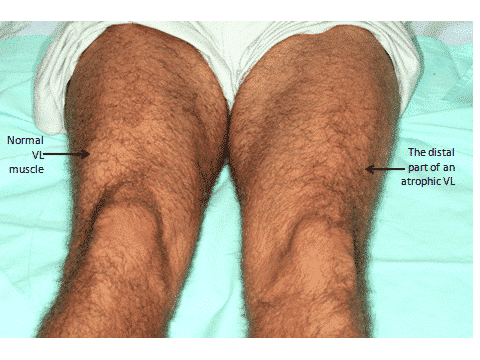
Botulinum Toxin Injections as a Salvage Theraphy for Patello Femoral Pain Syndrome (Pfps) Patients - A Retrospective Cohort Study
2Orthopedics, Beilinson hospital, Rabin Medical Center
3Orthopedics, Kaplan, Rehovot
4Orthopedics, Ichilov Hospital, Tel Aviv Sourasky Medical Center
Background: Patello-femoral pain syndrome (PFPS) is a common condition, presenting as anterior or retropatellar pain. It is associated with considerable morbidity and reduced quality of life. Excessive lateral patellar tracking and pressure have been suggested to be major contributors to the development of PFPS. Relative muscle imbalance between Vastus Medialis Oblique (VMO) and its antagonist - Vastus Lateralis (VL) can alter the patella-femoral joint mechanics and function.
Objectives: Midterm follow up and function post botulinum toxin A (BoNT-A) injection to VL for patients who failed conservative care for PFPS.
Methods: 26 patients (31 knees) age 50.1 (±19.7) were treated with botulinum toxin injections to VL and were instructed to performed home exercises focusing on re-training of the VMO muscle. The study population was diverse and included older patients (age>60), patients with osteoarthritis and patients with previous surgeries to the lower extremity. Mean follow up was 58.8 (±29) months. Pain (NRS), quality of life (SF-6D) and functional scores (Kujala and Lysholm questionnaires) were gathered. Additional data regarding demographics, compliance to physiotherapy, surgeries, complications, abortion of a planned surgery, and satisfaction levels were collected.
Results: Significant improvement in all the domains examined was observed. The average pain (NRS score) reduced from 7.6 To 3.2 (p < 0.01), the Kujala and Lysholm scores improved from 58.9 to 82.7 (p<0.01) and from 56.2 to 83.2 (p < 0.01) respectively. Statisticaly significance improvement regarding pain and function was observed in subgroup analysis including older patients (age>60) and patients suffering from osteoarthritis. There was a negative correlation between the pre intervention scores and the post intervention improvement. Prior to intervention 18 patients were designated for surgery, yet at last follow up 14 (78%) patients did not require surgical intervention.
Conclusions: A single intervention that included injections of BoNT-A to the VL combined with physiotherapy aimed to strengthen the VMO proved beneficial for the treatment of patients with PFPS that had exhausted conservative treatment treatment regardless of patellofemoral osteoarthritis, patient age or incompliance to physiotherapy post injection. The worse the condition had been prior to the intrvention the greater the improvement was.
Most of the patients that were designated for surgery prior to the treatment did not undergo surgical intervention till the end of the follow up.
Key Words: Patella, patellofemoral pain, PFPS, physical therapy, botulinum toxin, muscle imbalance


Powered by Eventact EMS